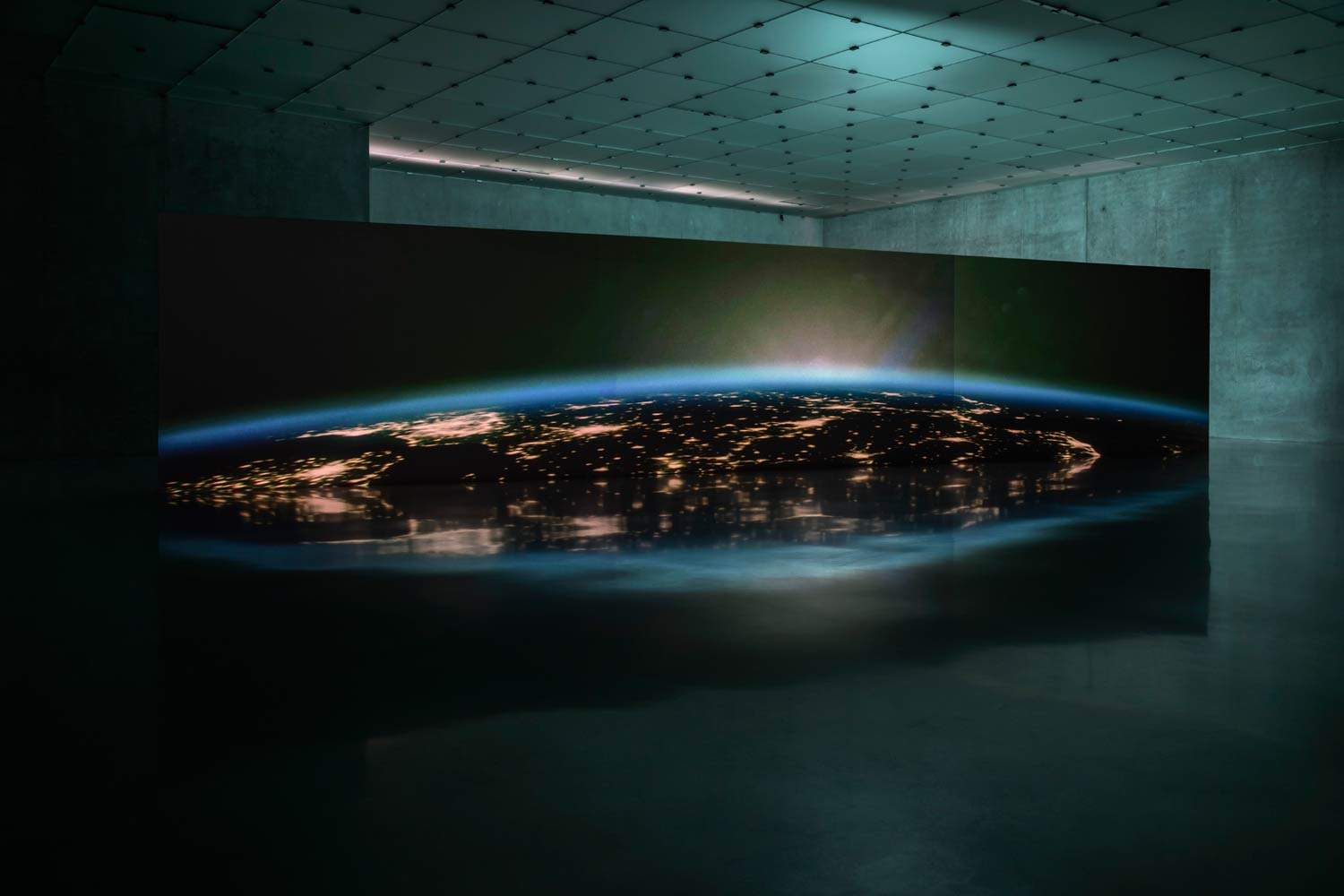GAMeC - Galleria d’Arte Moderna e Contemporanea di Bergamo leaves its building and, for the fifth consecutive year, returns to the premises of Palazzo della Ragione, in the center of the ancient city, with a new exhibition: the protagonist is Anri Sala (Tirana, 1974), the celebrated artist of Albanian origin who, starting with his most recent audio-visual installation, Time No Longer, activates a dialogue with the Sala delle Capriate.
Reaffirming an operational mode already tried on other occasions, Sala interpreted the architectural context of the Palazzo della Ragione “not as a simple container, but as an active organ,” as he explains. For the artist, every physical space can carry with it values and memories that, from time to time, interaction with the artwork can reactivate. In the case of the Sala delle Capriate, this dynamic finds further development (a sort of amplification of the effect) in relation to the centuries-old history of the building: in fact, it is the first City Hall in Italy, transformed into a Palace of Justice with the advent of the Republic of Venice.
Projected on a 16-meter-long floating screen, Time No Longer focuses on the image of a floating record player in a space station. Anchored only to the electrical power cable, the turntable plays a new arrangement of Quartet for the End of Time, a composition created by French musician Olivier Messiaen, considered the most famous musical work composed in captivity. During World War II, Messiaen (1908-1992) was captured in Verdun and taken prisoner in a German camp. It was during that time that he wrote Quartet for the End of Time, presenting it for the first time in 1941 (together with three musicians who were also prisoners) before an audience of only prisoners and guards. In particular, for the realization of Time No Longer, Sala was inspired by the quartet’s only solo movement, “The Abyss of the Birds,” written for clarinet and played by fellow prisoner and Algerian musician Henri Akoka.
The dimension of loneliness and constraint of Henri Akoka’s clarinet is echoed by Ronald McNair’s saxophone story. In 1986 McNair, one of the first black astronauts to reach space, and at the same time a talented professional saxophonist, planned to play and record a solo aboard the Space Shuttle Challenger. This would have been the first original piece of music recorded in space had the spacecraft not disintegrated seconds after liftoff, tragically killing all the astronauts on board. A technological jewel, the shuttle manifests itself in its tragic fragility by evoking the vulnerability of Messiaen’s prisoner condition.
With the collaboration of musician André Vida and sound designer Olivier Goinard, Anri Sala thus creates a duet between two instrumental voices: a performance without a performer where the clarinet, at times, mingles with the saxophone, uniting two moments distant in history and time, but united by a profound sense of loneliness and at the same time of determination and will. The musical composition constitutes a soundtrack of intention, alluding to McNair’s planned but never realized recording.
The suspended projection and darkness of the Hall of Walls are meant to evoke the absence of light and gravity in the universe, the dimension of emptiness in which the record player floats. In the room, the darkness is interrupted at times by flashes of light from a few lamps positioned at the back of the screen that, following the rhythm of the music, illuminate the room and, along with it, the paintings and frescoes arranged on the walls. The characters portrayed, including the Virgin Mary and the city’s patron saints Alexander and Vincent, as well as the figure of Justice, and in particular the four musician angels who, intent on playing their instruments (a viola, a cornet, a flute, and an organ), seem to converse with the four musicians of Quartet for the End of Time to witness a vanished humanity, linking different temporalities that traverse past, present, and future. Adrift in infinite space, as 16 dawns and 16 sunsets follow one another, the turntable thus wants to find a way to remain anchored in time and history, albeit also a prisoner of its own loneliness, like McNair and Messiaen.
Image: Anri Sala, Time No Longer (2021; four-channel computer-generated HD images and five-channel sound, color, translucent screen, pulse-generating speakers, dynamic lighting, duration 13’). Photo Markus Tretter, © Anri Sala, installation view at Kunsthaus Bregenz (2021).
 |
| Bergamo, GAMeC brings complex installation by Anri Sala inside Palazzo della Ragione |
Warning: the translation into English of the original Italian article was created using automatic tools. We undertake to review all articles, but we do not guarantee the total absence of inaccuracies in the translation due to the program. You can find the original by clicking on the ITA button. If you find any mistake,please contact us.